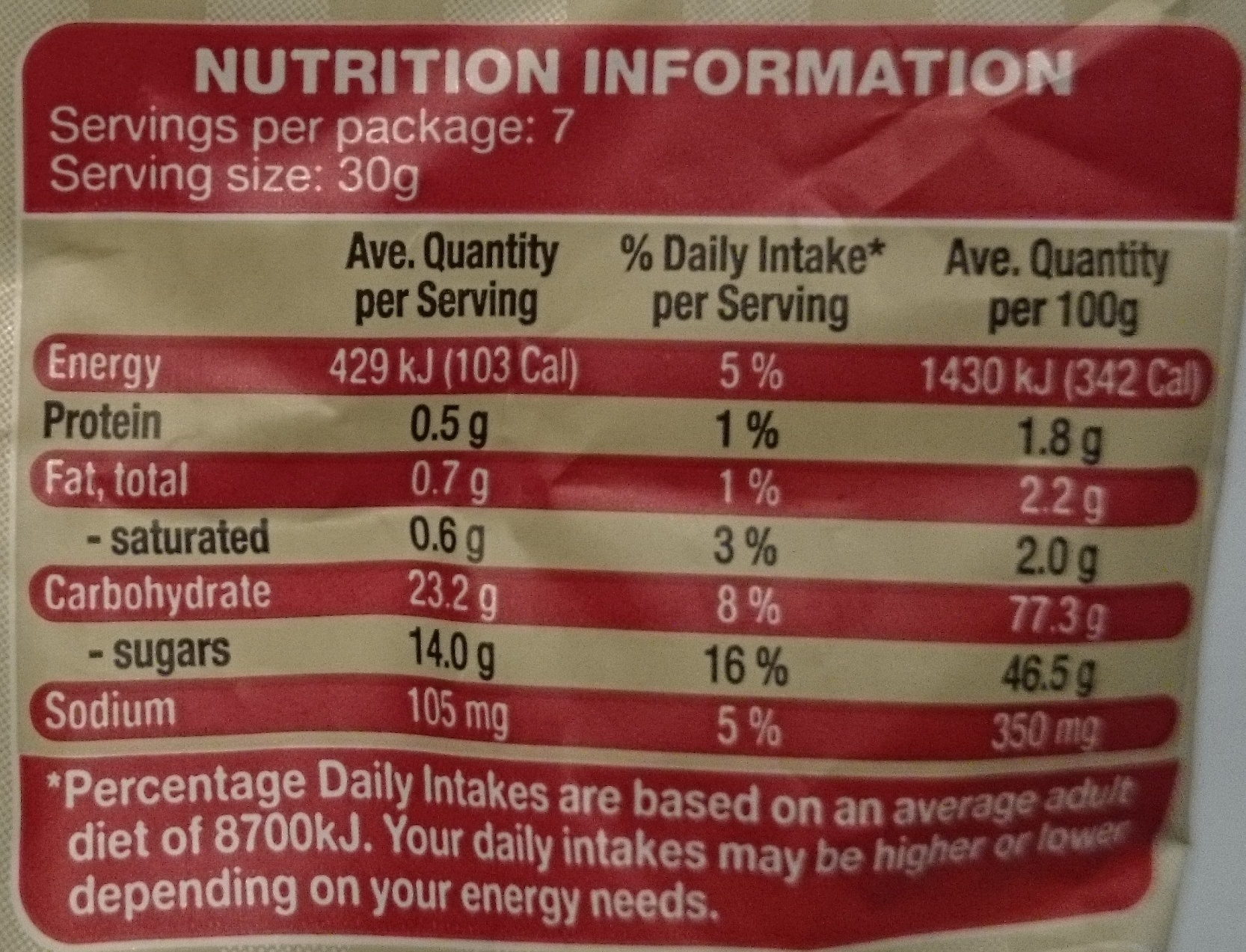Dominion Naturals Strawberry Flavoured soft Eating Licorice - 210g
Ambiguous barcode: This product has a Restricted Circulation Number barcode for products within a company. This means that different producers and stores can use the same barcode for different products.
×
This product page is not complete. You can help to complete it by editing it and adding more data from the photos we have, or by taking more photos using the app for Android or iPhone/iPad. Thank you!
×
Barcode: 26208527
Quantity: 210g
Packaging: Bag
Brands: Dominion Naturals, Aldi
Categories: Strawberry Licorice
Labels, certifications, awards: No artificial flavors, Australian made, No artificial colors
Origin of ingredients: Australia
Manufacturing or processing places: Australia
Stores: Aldi
Countries where sold: Australia
Matching with your preferences
Environment
Packaging
Transportation
Report a problem
Data sources
Product added on by foodorigins
Last edit of product page on by packbot.
If the data is incomplete or incorrect, you can complete or correct it by editing this page.











